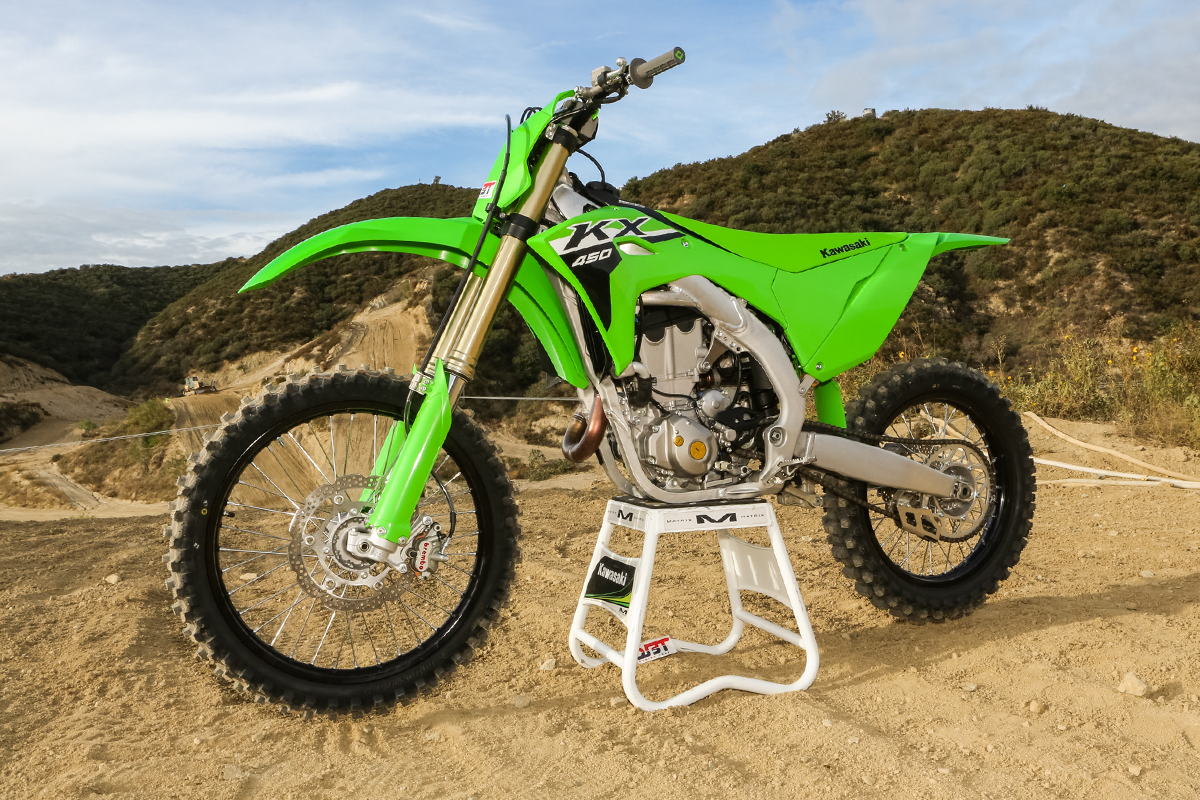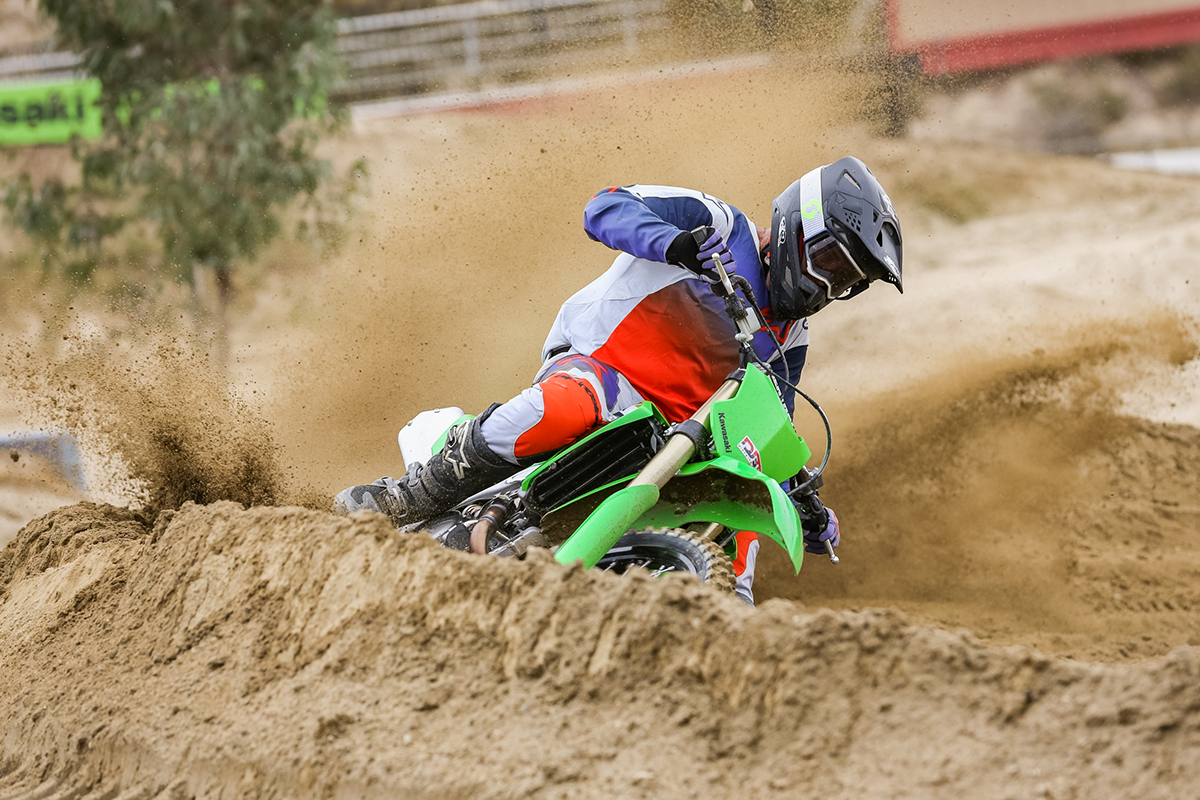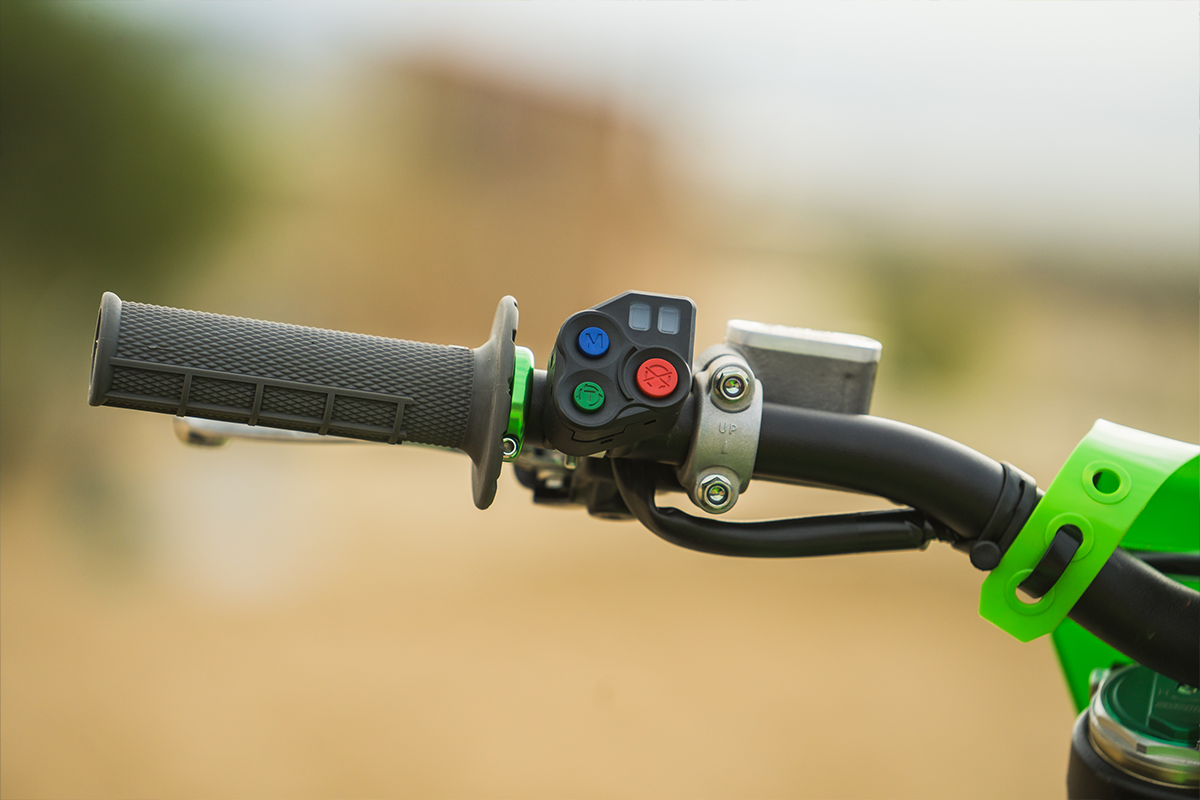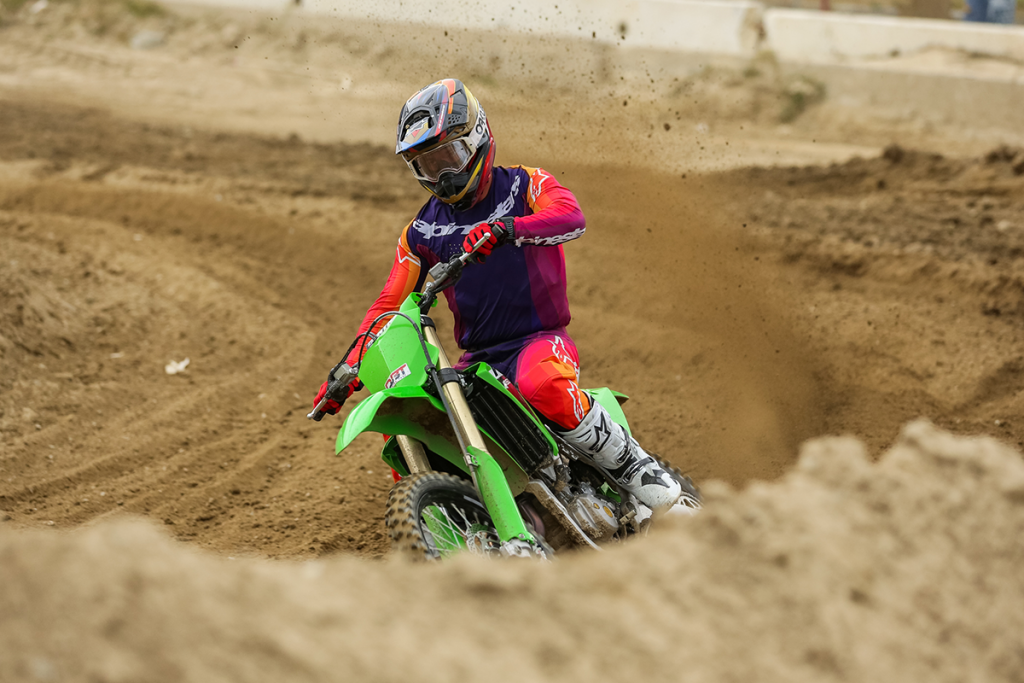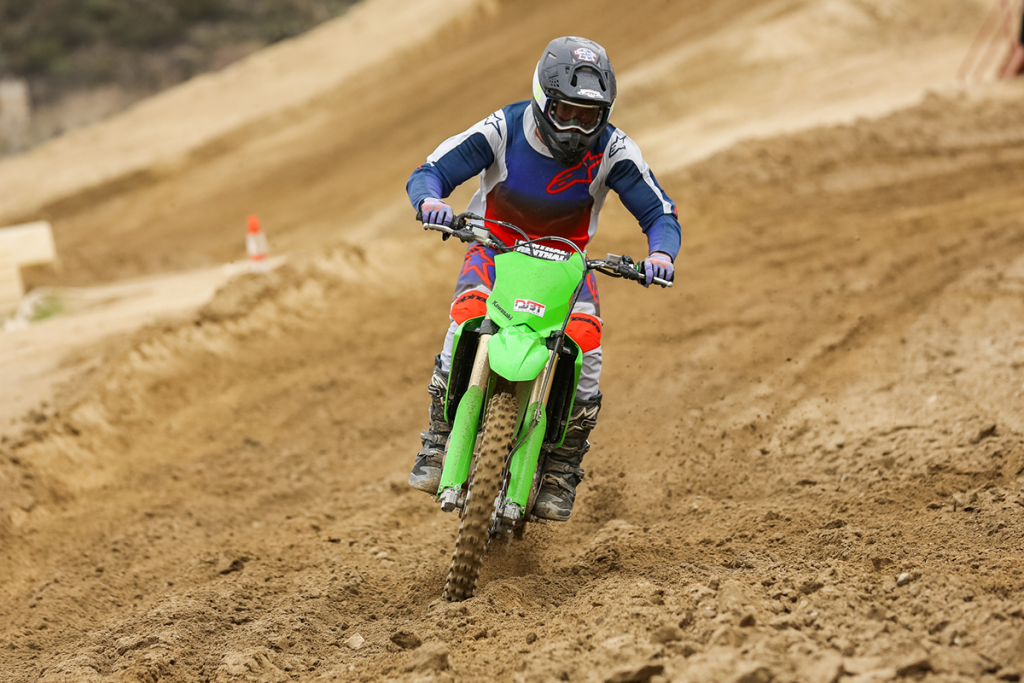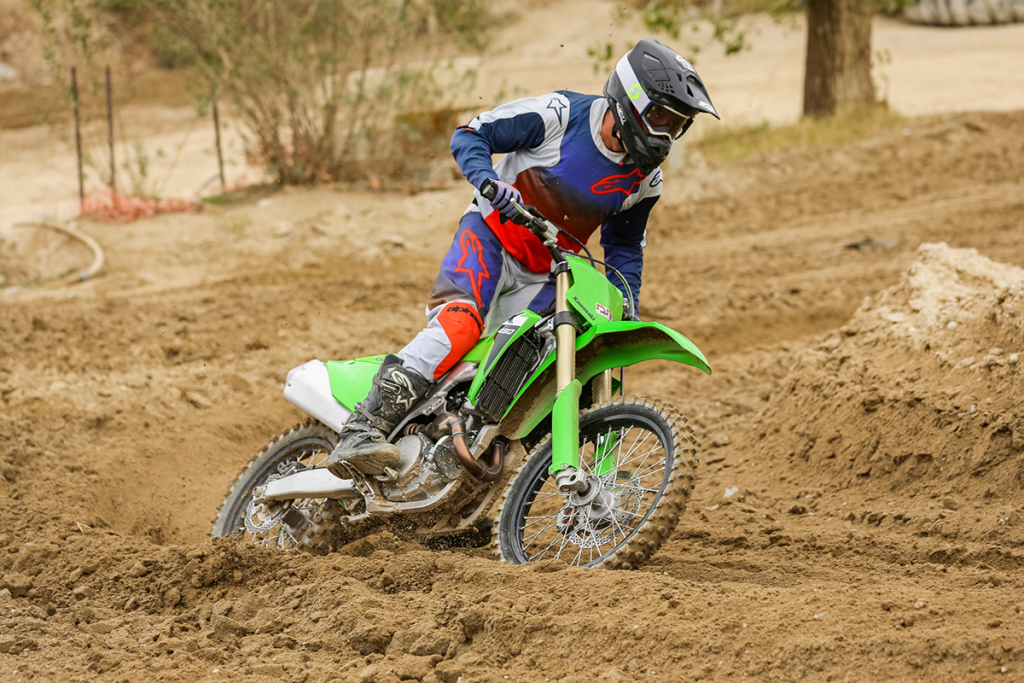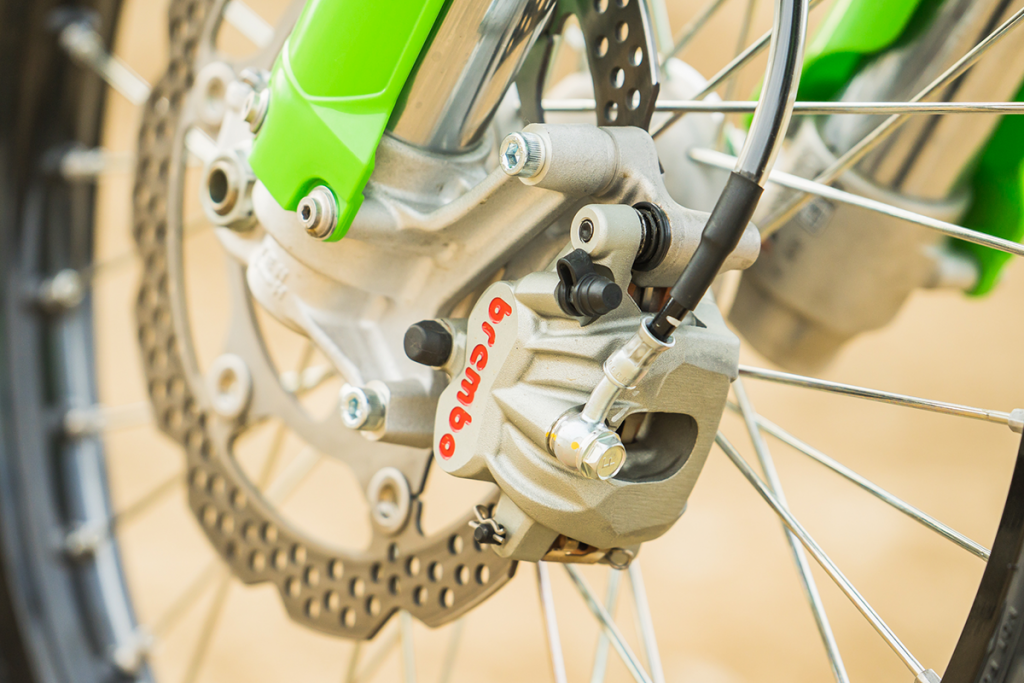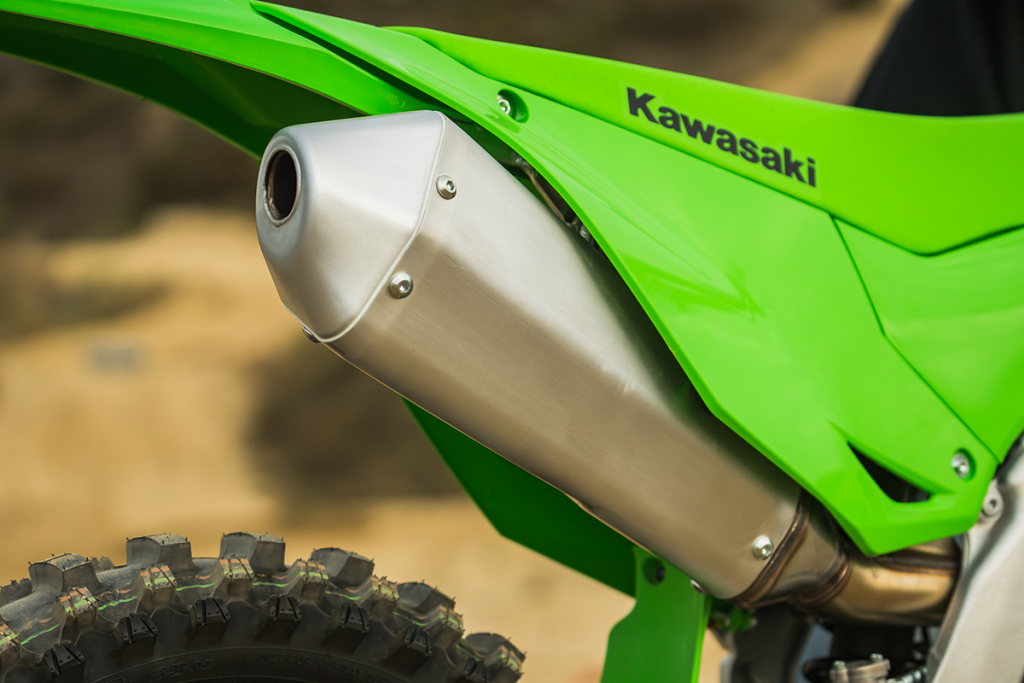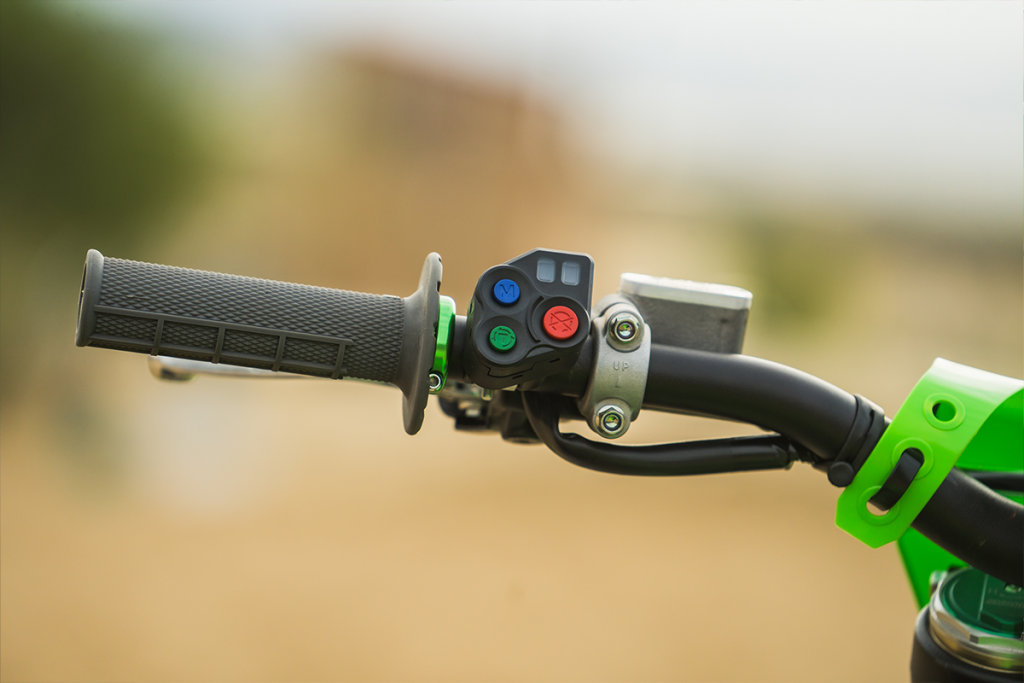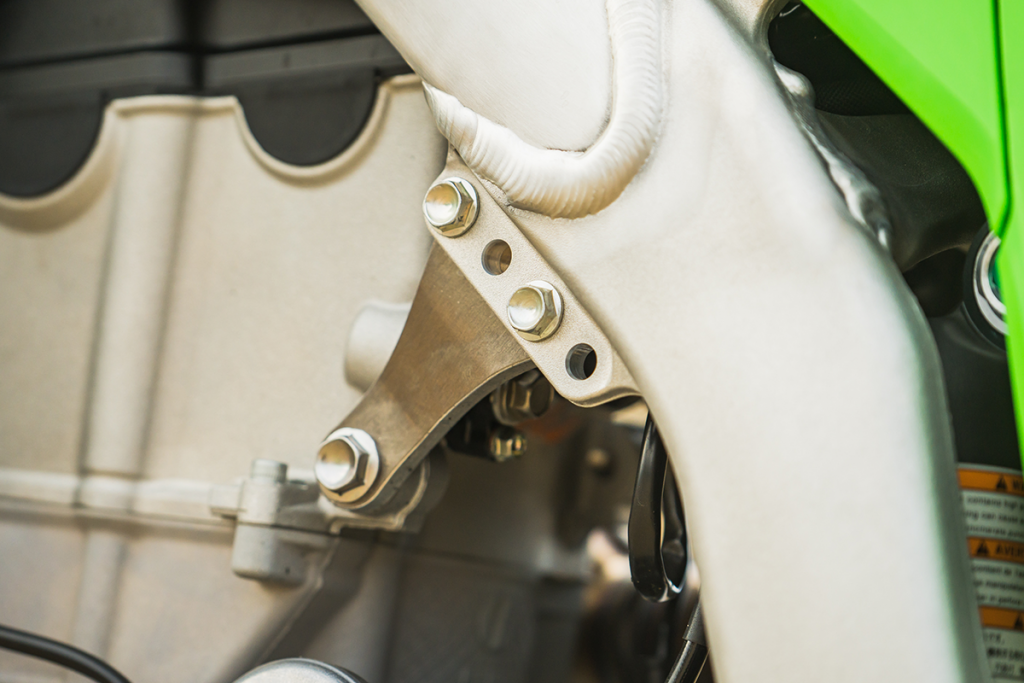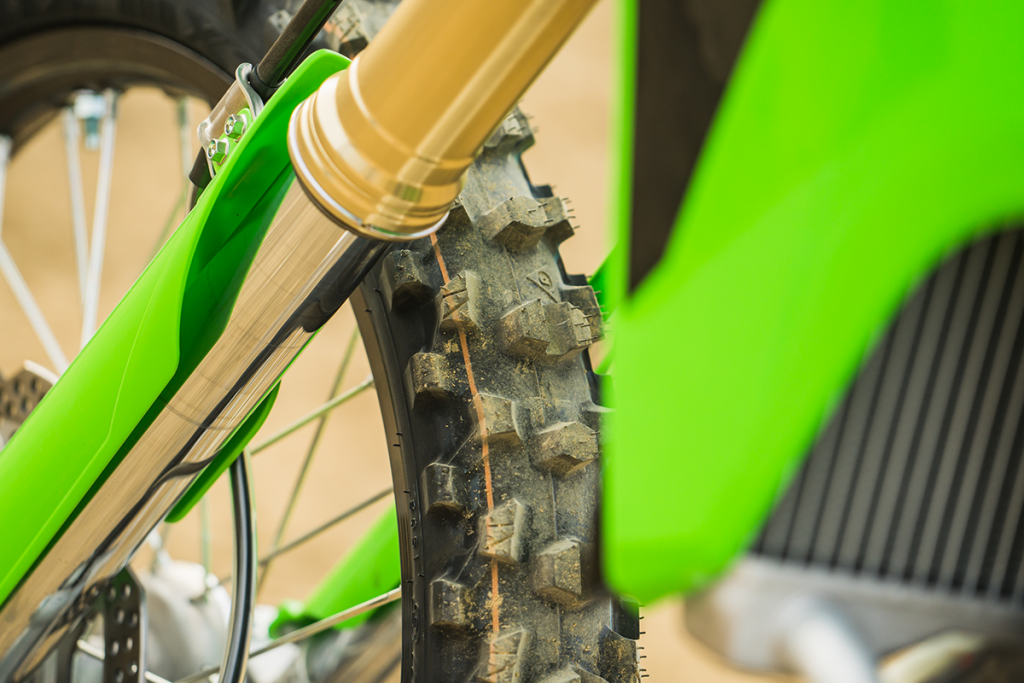It’s Finally Here
Story by Jimmy Lewis, tech infor and photos by Scott Hoffman
The tease is over and the very popular 2019-2023 KX450 platform is now in the history books. The 2024 is what we would call an all-new model and far from a revision. Yet, Kawasaki has assured their goal was to retain the traits that KX450 fans have always loved, update the platform with more usable performance, and improve handling. This is sometimes not an easy task. Will the KX stability and rideability stay intact with a new slimmer, more powerful ride that turns better than before? This is the moment we have all been waiting for. We’ll get to the riding impression first.
How It Works
From the first laps, riders feel two pronounced things when compared to earlier KX450s – a lighter feeling chassis and smoother power delivery. Though the scale will tell you there are five extra pounds on the ‘24 KX450, you will never know while riding. Through the handlebar and even in side-to-side maneuvering, the machine feels more nimble and less bulky. We are told a significant amount of the weight gain is in the change of tires. But experience has taught us that power delivery also affects weight feel even further. The new-for-Kawasaki smoother torque curve and longer over-rev combine to what a lot are calling a “slower” feeling bike but one that is much easier to ride in most conditions.
There are a number of combinations between the two power modes and different traction control settings. The base maps in the power modes are standard and less aggressive, both of which a rider can easily feel a difference. Traction control definitely makes a difference with the first mode, a light reduction in responsiveness from the throttle. Level 2 is quite noticeable. Those that like to have their right wrist movements muted will appreciate the addition of these settings. On a side note, you must be idling and hold the button for close to three seconds to make a change, so like the Honda system we will not call it on-the-fly adjustable.
The FI on the KX is spot-on in “jetting” and never faltered in our one-day impression. Smooth, linear, responsive but not too snappy and willing to rev, these were all descriptive of what our riders felt. Where the old KX had more of a pronounced snap and a mid range surge, the new model feels as if the peaks were tamed and the valleys filled when you get on the gas. Less surprises and more traction, though not as exciting would sum it up. And if we were to compare it to other bikes we would call it a blend between a CRF450R and KTM 450 SX-F due to the smoothness and more rev-willing nature.
The clutch is easy to work and has a consistent and solid engagement but a quicker release than other fluid designs. Shifting was normal with a strange reluctance to easily shift between 3rd and 4th gear only for some of our test riders, a sensation noted on multiple different bikes we sampled. This may get better with time and a few oil changes or it may be a thing? Gear ratios with stock gearing were spot-on for the all-condition day we had at Glen Helen Raceway. One of our test riders felt a little gap betwen second and third and in the future wants to test possible gearing changes, something they ran on the older gen KX.
Just to try, and not because we needed it, we had an aggressive map sent into the ECU with the KX Rideology app. It was a minor change and produced a noticeable difference in the power delivery proving to this writer (Jimmy Lewis) that the App will be as powerful and useful as the one we praise so much from Yamaha. The difference was that on a Yamaha I needed to change the map from stock for my preferences, but for this day and on this track it felt as if Kawasaki had made the stock (standard) map just for me. Some of our other testers felt that had the rain not come, the new map added the excitement they were looking for and allowed them to pull taller gears through the corners without abusing the clutch.
We have no doubt that this tool will boost the likability of the KX to so many more riders who are willing to try a few mapping changes. From our observation of the app and its functionality, it might take a little more learning on the rider’s for functionality and sharing of maps isn’t quite so easy.
With the lighter feeling, slimmer, and less bulky feeling KX comes heavily revised Showa suspension. Like our experience with the Honda CRF, the Showa components have made a big step forward in comfort feeling without losing the great damping control they are famous for. With just sag changes between three very different builds of riders, we were all very happy and did not feel the need to get into clicker changing. The bike has really good hold-up for how little impact feel is transferred to the rider and did not do the fore and aft pitching that could be noticed on older KXFs. We did have some expected front-end bottoming but it wasn’t enough to want to change clickers, and if in later testing it is an issue, we feel a little additional oil or maybe a rate up on the spring for our heavier riders would make this go away.
To describe the handling, it had a lot more to do with the entire package. Where the old KX had more of a point and shoot and rear-end steering character, this version has more flow built in. You can now follow the front wheel in turns comfortably where the older bike felt more top-heavy and provoked sudden changes. Or if you want, just now taking a little more clutch effort or a bigger dose of throttle, steer with the rear and the KX is equally happy. Changes in ride height can also tune the character of your turning preference without consequences on the stability. And speaking about stability, we feel the new bike did not lose any stability, but it also did not improve here either – it was already good.
Another positive of the KX chassis over the years has been bump compliance and comfort. While it didn’t get overly rough in our time at Glen Helen, this felt very much the same as the old chassis which is a good thing.
The bike was balanced front to back and seemed to work well with the new Dunlop MX34 tires. Of note was the control and strength of the new Brembo front brake and it seems the touchyness of the rear brake has been addressed with the smaller 240mm rear rotor and the updated Nissin system for ‘24. The bike has a muffler with sound baffling and is pleasant for the rider in the noise department and there is even a baffling inside the airbox (ours was removed for this day) to tone the power delivery and noise output. So if you miss the abruptness of the older KX, experience tells us it is a simple muffler change away.
Overall the KX stood out by not standing out. It has done again what has made it so successful in the past comparisons and shootouts by reading where all the other 450’s seem to be placed and sitting right in the middle. In the past, 450’s were all about power. The KX stood out by delivering on that feeling while always being rideable. In this era, power is easy and rideability is discussed more. And guess where this KX landed? More testing is needed for sure at more tracks and alongside other bikes.
Big Changes
First off, the style and look of the new ride is fresh but still has that KX familiarity. Slimmer body work, Brembo front brake (a first for a Kawasaki moto bike), new electronics, frame, redesigned head and cylinder, and updated suspension are all part of 2024.
The lower end of the KX is very similar to the older platform except for larger big-end rod bearing and oil jet direction. The connecting rod is actually 5mm longer, yet the stroke remains the same. This changes the rod angle and also means the cylinder and new head have also been moved up 5mm. The cases are also slightly changed with updated oil passages and oil distribution to the top end components and crank.
The head has been reconfigured with the new straight downdraft intake tract and center-port exhaust. The head still features finger-follower actuation, yet the intake valves are now 38mm which is 2mm smaller than the old platform. Cams have also received some updates.
Items such as the coned-disc clutch, transmission, and lower engine components are some of the select few items that carry over from the older platform. Even the fuel pump pressure has been increased to improve drivability.
Electronics
Gone are the swappable couplers and now Kawasaki is in with the tech generation. The new platform is right there with the masses with a smartphone app that controls engine mapping, tracks maintenance, and has a place to log setup notes.
The on-the-fly power mode selector can change between two maps, two traction control settings, and launch control. Each of the power modes can be mapped to your desire using the App. Settings can be selected, even while riding, as long as the throttle is shut off. A small Bluetooth sending unit can be linked with a smartphone after the app has been downloaded. This is a first for Kawasaki moto bikes.
Frame
The frame retains similar pickup points yet has been completely redesigned. First to accommodate the straight exhaust and downdraft intake but also to improve handling and cornering. Torsional rigidity parameters have been altered to improve front-wheel feel in corners.
Suspension
Showa is still part of the KX450 with a 49mm fork but internal settings including larger inner tubes, valving, and the free piston has been revised.
The shock length is shorter (by 32mm) due to the lower mounting point on the frame but the overall stroke remains the same. A new machine process allows for better consistent roundness and less friction within the shock body. Valving settings are new, as is the internal gas pressure settings.
Triple clamps and swingarm are carryover items yet the linkage is all new due to its slightly lower mounting position on the frame. The rising rate of the link is very similar to the prior generation.
Ergonomics
The rider triangle has not really been altered with regard to seat height, footpeg position, and bar position. However, the bodywork is all-new with a smoother radiator shroud area with less catch points and it’s easier for the rider to move around on the bike.
Additional Changes
More notable changes include ODI lock-on grips for feel and ease to swap out if needed. Rear hub has been optimized 58mm (12mm larger) for better feel and traction. Tool-less air filter changes and an all-new air filter design are included. Dunlop MX34 tires come stock. Footpegs and handlebar position are still very adjustable depending on the rider. The exhaust is new with a shorter muffler for mass centralization and the header resonator is now flat and tucked in further.
A little later in the year Kawasaki accessories will also be offered including optional engine mounts to further tune the chassis, optional sealed chain, skid plate, optional spring rates, sprocket options, as well as a full line of KPO (Kawasaki Performance Oils).
